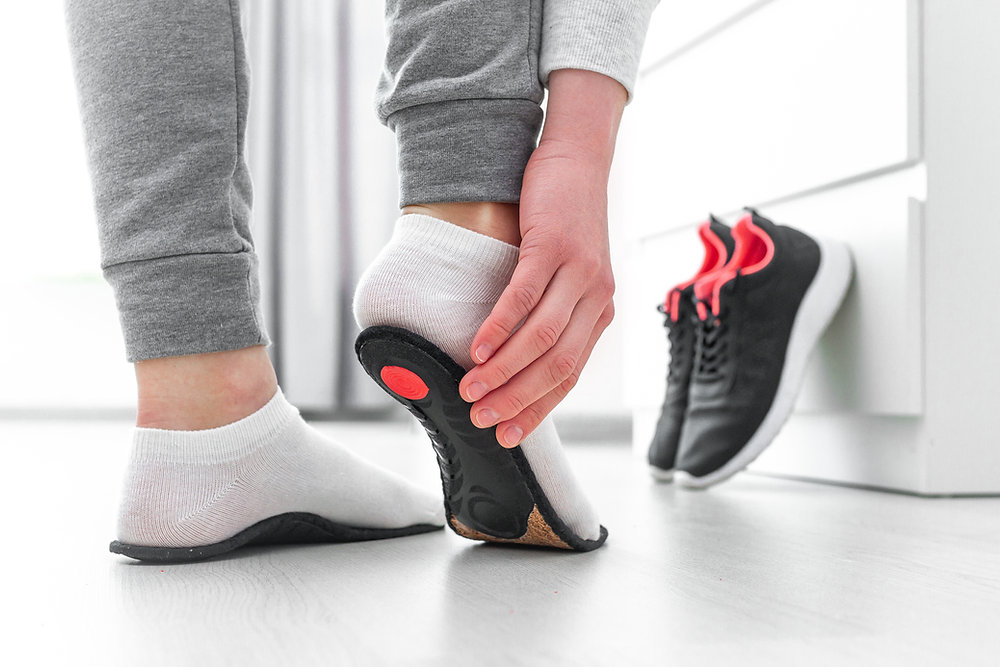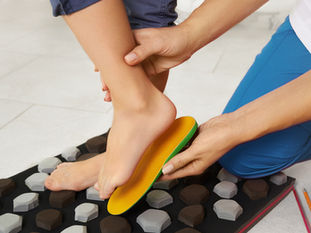
How custom insoles can help relieve plantar fasciitis
Jan 4
4 min read
Plantar fasciitis is one of the most common causes of heel pain, affecting millions of people worldwide. It occurs when the thick band of tissue at the bottom of the foot (known as the plantar fascia) becomes inflamed, typically due to overuse, poor arch support, or repetitive stress. The condition can be excruciating and persistent, making everyday activities like walking or standing a painful challenge. Fortunately, insoles—customized or over-the-counter inserts for shoes—are often an effective solution to manage the symptoms of plantar fasciitis and promote healing.
Understanding Plantar Fasciitis
To better understand how insoles help, it's essential to know what happens in the foot during plantar fasciitis. The plantar fascia supports the arch of the foot and absorbs the shock of each step. When this tissue is overstretched or put under pressure from excessive walking, standing, or other high-impact activities, tiny tears can develop in the fascia. Over time, this leads to inflammation, pain, and difficulty in movement.
Plantar fasciitis is commonly characterized by sharp, stabbing pain at the heel, especially when first getting up in the morning or after prolonged periods of inactivity. The pain typically eases after a few minutes of walking but can return with extended standing or walking.
How Insoles Can Help
Insoles provide an effective, non-invasive way to address the root causes of plantar fasciitis pain. Here's how they work:
1. Improved Arch Support
Insoles with proper arch support help distribute body weight more evenly across the foot. For people with flat feet or high arches, the plantar fascia may be subjected to excessive strain. Insoles that offer targeted support in these areas help to reduce the load on the plantar fascia and prevent overstretching, thus alleviating pain.
By providing arch support, insoles help correct the alignment of the foot, which can also impact the alignment of the lower limbs, reducing the overall strain on the body.
2. Shock Absorption
A key benefit of high-quality insoles is their ability to absorb shock during walking or running. The soft cushioning material in insoles—such as gel, foam, or memory foam—acts as a buffer between the ground and your feet, reducing the amount of impact on the plantar fascia. This reduction in shock helps to prevent further irritation of the already inflamed tissue, promoting healing and reducing pain.
3. Even Weight Distribution
People with plantar fasciitis often unknowingly change their walking patterns to compensate for the pain, shifting more weight onto the toes or the outer edges of the feet. This can lead to even greater strain and discomfort. Insoles designed to distribute pressure more evenly across the foot can help restore a natural gait, improving foot function and relieving excess pressure on the heel and arch.
4. Reduced Overpronation
Overpronation occurs when the foot rolls inward too much while walking or running. This excessive inward motion can put additional stress on the plantar fascia, exacerbating the symptoms of plantar fasciitis. Insoles with built-in support structures or orthotic features can help to control overpronation, stabilizing the foot and reducing the strain on the plantar fascia.
5. Alignment of the Lower Extremities
Proper foot alignment affects the rest of the lower body. Misalignment in the feet can lead to problems up the kinetic chain, such as knee, hip, or lower back pain. Insoles that correct foot positioning can also improve the alignment of the ankles, knees, and hips, further reducing the risk of injury and strain in other areas of the body. This holistic approach can enhance comfort and mobility for individuals suffering from plantar fasciitis.
6. Pain Relief for Daily Activities
Wearing insoles can provide immediate pain relief for people with plantar fasciitis, allowing them to carry out daily activities like walking, standing, and even running with greater comfort. For those who work on their feet or engage in physical activities that exacerbate heel pain, insoles can be a game-changer, helping to reduce discomfort and promote overall well-being.
Types of Insoles for Plantar Fasciitis
There are several types of insoles designed specifically for managing plantar fasciitis:
Orthotic Insoles: These are custom or over-the-counter insoles designed to provide maximum support to the arches and heels. Custom orthotics are made based on your foot's specific shape and pressure points, while off-the-shelf versions can still offer significant relief at a more affordable price.
Gel Insoles: These insoles are made with a soft gel material that provides cushioning and absorbs shock. They are particularly beneficial for individuals who suffer from heel pain and need extra padding for comfort.
Foam Insoles: Soft, foam-based insoles provide moderate cushioning and comfort. They are lightweight and flexible, making them a good choice for people who spend long hours on their feet.
Cushioned Insoles: Some insoles have extra layers of cushioning that target the heel area, where pain from plantar fasciitis is often most intense. These insoles help minimize the discomfort of standing or walking.
Choosing the Right Insoles
When selecting insoles to help with plantar fasciitis, there are a few important factors to consider:
Foot Arch Type: Choose insoles that match your foot arch type—whether you have flat feet, medium arches, or high arches. Insoles with adjustable arch support can provide greater customization.
Material: Look for insoles made from durable materials like memory foam, gel, or EVA foam, which are known for their shock-absorbing and cushioning properties.
Comfort and Fit: The insole should fit snugly into your shoes without being too tight or too loose. Insoles that are too thick may make your shoes uncomfortable, while those that are too thin may not provide enough support.

Conclusion
Insoles can significantly alleviate the pain and discomfort associated with plantar fasciitis by offering targeted arch support, reducing shock impact, and promoting proper foot alignment. Whether you opt for custom orthotics or over-the-counter solutions, incorporating insoles into your footwear can be an effective, non-invasive way to manage plantar fasciitis and enhance overall foot health. If you're experiencing persistent heel pain, consider consulting me to explore the best insole options for your specific needs.
Jan 4
4 min read

